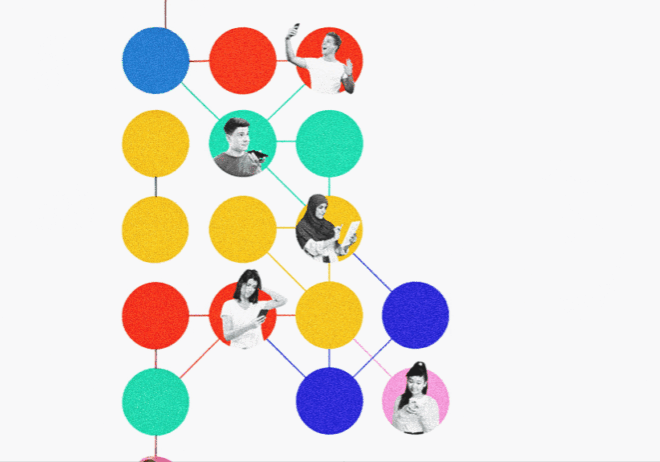
How Vocal-Only Tracks Are Powering the Future of Remix Culture
What do you get when you take a song and pull it back to just its vocals? Magic. Or, more specifically — potential. A solo vocal track is not just a studio artifact; it has transformed into a point-source that feeds off thousands of potential innovative ideas. In remix culture, vocal-only stems are considered creative currency that producers, fans, and brands are racing to acquire.
Once only the domain of DJs and studio engineers, vocal-only tracks are now available to anyone with a laptop and a clever idea. With AI tools and creator platforms, it has never been easier to isolate vocals from a song with the smooth ease of drag and drop. The outcome? A culture where remixing isn’t just acceptable, it’s expected.
From TikTok loops to Grammy-winning edits, the remix renaissance is happening. At the core of this explosion of creativity is a new type of musical raw material: the unencumbered human voice. Dynamic, powerful, mutable — the unadulterated voice provides space for the imagination to roam.
But the movement is also changing the way music sounds. Music’s distribution, consumption, and marketing are also changing. In a world where everything is remidifyable, vocal-only tracks are doing more than simply ride the wave; vocal tracks are the wave.
Wait, what is remix culture?
Before we get too far into the vocals-only landscape, I think it makes sense to back up. Remix culture is the trend in which existing content—most often sound-related, like music—is remixed, re-imagined, or mashed up. It is why mashups, covers, sample flips exist—and dance remixes.
In our remix culture today, it is not just about the beats; it is about creating new contexts and new life from content. It is like cultural recycling—think of how the beat of the ’90s now announces itself with today’s trap drums, or how Beyoncé’s vocals lay over an Afrobeats rhythm. In this ecosystem, all content is remixable. Nothing is private or sacred.
The power of the isolated vocal
An isolated vocal lets you get exactly what it sounds like—a vocal track with just the voice of the vocalist and none of the backing instruments. No bass, no drums, no synths; just voice. Just a pure feeling. And that is golden in today’s production landscape.
Why?
Because it gives anyone—from bedroom beatmakers to TikTok creators—the ability to create something completely new around it. A ballad can become a dance record. A pop hit can become a lo-fi chill record. A gospel hook can go over a trap beat. This flexibility is what makes these acapella tracks the building blocks for contemporary remix culture.
TikTok, AI, and the Viral remix machine
It’s impossible to talk about remix culture today without mentioning TikTok. More than anything we have seen before, the app has democratized music in a way that is rare to find. With just a few easy taps, a user can take a trending vocal and create a speed-up version, a slowed reverb vibe, or even a bizarre yet oddly satisfying “sludge remix.” Vocal-only tracks are the perfect fodder for this.
Vocal-only tracks afford micro-creators the ability to create the audio version of whatever trends, memes, or moods the TikTok algorithm is hungry for.
And AI has further exploded this entire process. Websites like Lalal.ai, Moises, and even a few open-source tools allow you to extract vocals from just about any song in less than a few seconds. What used to take studio equipment and a sound engineer can now be done by anyone with a Wi-Fi signal and a creative itch.
Case example: “Cuff It” and the creative explosion
Let us take a moment to discuss Beyoncé’s “Cuff It.” In 2022, a vocal-only version of the track began to circulate online. It was not an official release – it was an extraction by a fan. But what happened next was classic remix culture at work.
Producers began placing different beats underneath her vocals. Someone flipped it to be a Jersey club track. Someone used a Bollywood tempo. Another person mashed it up with house music – and it worked.
Before long, a remix by DJ Esentrik and Serafin went viral. It was so well done that Beyoncé’s team made it official – an internet bootleg became an official release. This is not a one-off. It is a pattern. It is what the culture is doing now.
From fan-made to mainstream
It is remarkably interesting how vocal-only remixes are leveraging gaps between fandom and creation. Historically, fans have supported artists through streaming or by buying music. Now, fans are remixing music. They are re-contextualizing music. In some cases, fans are helping remixers push music back into the charts.
Olivia Rodrigo’s “Vampire” had dozens of unofficial vocal-led remixes to be “viral” before the original had even peaked for the summer! Same with SZA’s Kill Bill and that tune being remixed into drum-and-bass, Afrobeat, and even classical (via leaked stems).
And these are not niche underground hits. These have millions of views, are on editorial playlists, and sometimes outperform the original on Soundcloud or YouTube.
The ethics of the unofficial vocal remix
And like every revolution, this vocal remix revolution has its negatives. There are tons of acapella tracks floating around online—many of which are unofficial, AI-extracted, or leaked. Which opens up a number of questions:
- Who owns the remix?
- Is it fair use or is it copyright?
- Should labels allow this creativity to breathe or stop it in its tracks?
Some artists are fine with it. Some are unsure. There’s a huge grey area here. But when we live in a creator economy based on culture and virality—trying to stop remixes is like trying to put toothpaste back in the tube.
If anything, artists and labels are starting to lean in. We are seeing new official vocal-only releases added to deluxe album drops. This shows a shift of giving tools to fans to remix legally. It’s almost like fans becoming co-marketers.
Vocal samples and the future of remix culture
Remix culture has evolved in a number of ways. As of late, the remix’s future lies in a vocal-only track that enables the next generation of Gen Z or Alpha creators to design the new sample pack. With just voices, vocal tracks are creative, modular, and simple to share.
More artists are now releasing tracks intended to be remixed—pointing to a future that’s collaborative, not competitive. Imagine this: a new album drops along with official vocal stem packs on day one. Platforms like Spotify or YouTube could soon feature built-in remix contest tools, with hundreds of creators participating live. One step further to an adaptable, participatory culture where users aren’t just consuming—they’re co-creating.
Cut to the chase
Vocal-only tracks are central to a remix-based culture today, supporting creativity across TikTok, music production, brand campaigns, and more. It is now easier than ever to access vocal-only tracks, with AI continuing to make significant strides in this direction. Are you ready to ride this wave? Dive into the future of music innovation and start remixing now.


